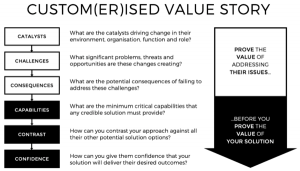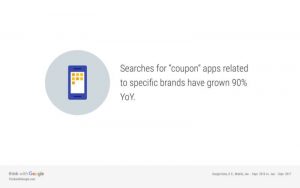What is Lifetime Value?
Lifetime Value (LTV) is a long-term way of looking at which customers are worth the most. This information can then be used to readjust your PPC strategy across Google AdWords, Bing Ads, Facebook Ads and other search marketing mediums. Accounting for LTV in your PPC can result in you getting the most valuable customers in the most cost effective ways.
Most big advertisers are aware that only using a monthly target Cost Per Acquisition (CPA) is shortsighted and limits PPC success.
Being able to harness the valuable information LTV supplies will allow your business to make intelligent decisions on what your target CPA should be and how your account should divide its focus.
What if a campaign is converting within an extremely low target CPA, but most of these customers barely return, or spend very little when they do? What if another campaign with a higher CPA is bringing in customers that spend more and come back more?
Consider the possibility that a successful sale might lead to more sales in the future; that a customer might return to your business. These reoccurring instances of business from the same lead or visitor on your website start to illuminate the fact that your month-to-month CPA is not the end-all be-all to focus on—the LTV of these visitors is.
How do I Figure Out LTV?

The basic formula for LTV is multiplying your average monthly revenue per customer and gross margin per customer, and then dividing that by the monthly customer churn rate.
(Avg Monthly Revenue per Customer x Gross Margin per Customer) ÷ Monthly Churn Rate = LTV
Calculate Churn Rate
Let us figure out how to get our churn rate first (in case it’s unfamiliar). Churn rate, or the rate at which customers are lost in a certain period, is the opposite of retention rate, or the rate at which customers are retained in a certain period.
(Customers at start – Customers at end) ÷ Customers at Start = Churn Rate
If a company has 1000 customers at the beginning of the month and only 900 at the end of the month, the churn rate calculation for the month would look like this:
(1000 – 900) ÷ 1000 = 100 ÷ 1000 = 10% Churn Rate
You can find you retention rate with your churn rate as well.
1 – Churn Rate = Retention Rate
Now let us look at an example for a LTV calculation. If a company makes $ 50 per month from a customer with a gross margin of 30% and a churn rate of 10%, the lifetime value of that particular type of customer would be $ 150.
($ 50 x 30%) ÷ 10% = $ 150 LTV
Broad sweeping calculations like this are helpful for a general idea, but I advise you to segment further. Here’s some more information on customer segmentation.
Look at different LTV for different types of customers, different product buyers, service subscribers, etc. The closer you get to the specific consumer the more you’ll understand their specific LTV, and this is extremely helpful for your future marketing efforts.
For an example of LTV being applied to a store that sells talking parrots, check out our LTV whitepaper here.
What Do Customers Do In Their Lifetime?

They dance!
Tracking customers beyond the monthly cycle is an intrinsic part of LTV and it might require collaboration from multiple teams within your business, but it is well worth it.
For example: an individual searches for your special narwhal coffee table decoration they:
- See an ad for a narwhal paperweight.
- Click the most relevant ad, in this case yours in the 2nd position.
- Get excited by your vibrant product landing page.
- Purchase a brand new narwhal paperweight.
- Three months later they come back to your site without clicking any advertising and buy another narwhal for their mother.
- Six months later they buy another for their optometrist directly over the phone.
Something’s Wrong
Your monthly PPC reports will record the first conversion, but the second and third might not be tracked depending on what you have set up. The value of the conversion might look like a single sale, when in reality that ad earned your narwhal boutique three purchases.
Without knowledge of the individual’s lifetime purchases, the ad might be undervalued, bid less on, and could lose its positioning on the search results page, resulting in lost exposure and potential sales.
The first click of that ad cost you $ 10. Now, an average purchase only has a profit margin of 50%. Without LTV accounted for, this sale would seem unprofitable. The advertisement would then be deemed fit to receive a lower bid in the monthly bidding optimization.
By lowering the bid, the advertisement begins to lose position on the search results page, falling from 2nd place, to 3rd, and then further. The next narwhal aficionado begins his search for the best boutique using the same query that triggered the customer we discussed in the prior paragraph. However, this time he doesn’t see your ad because it’s in an obscure position.
Fix Your PPC Advertising with LTV
Not only have you lost his initial conversion, but you have also lost the sixteen orders for his extended family that he is now going to make with Narwhalmania over the years.
With LTV accounted for, bidding is given more room as the value of the click is worth more than a single average purchase. This means that you instead increase your bid on the ad, pushing it from 2nd to 1st place, in turn, accruing more clicks, and more profitable, lifetime customers.
Increasing the bid costs you more money in the short term, you may not even break even on the first few months, but as the lifetime customers accumulate, you start to see your long term investments pay off.

A Narwhal’s lifetime can be 50 years, that’s a lot of value!
Account for LTV!
Figuring out the average value of your customers will require long-term tracking which not only tracks search marketing conversions but organic and offline conversions as well.
Getting the long-term picture can be a difficult task if tracking is not set up between the divisions of your business, i.e., a customer might click an ad, buy, visit a few months later organically, buy again, phone order the month after that, etc. Different departments will have information on the customer and putting it together to get a sense of long-term habits will help your LTV calculations.
From Google AdWords to Bing Ads, knowledge of the lifetime value of your customer can only aid in the effective management and optimization of your PPC account. Strong communication between your marketing, sales, and finance teams will allow your business to determine accurate LTVs.
With accurate LTVs you can confidently set target CPAs, forecast your PPC, and optimize for the most valuable kinds of conversions.
If you’re still unsure about LTV, or want an expert’s opinion on how your LTV should be influencing your PPC, contact the team at Vantage for a free PPC consultation.
Digital & Social Articles on Business 2 Community(86)
Report Post




